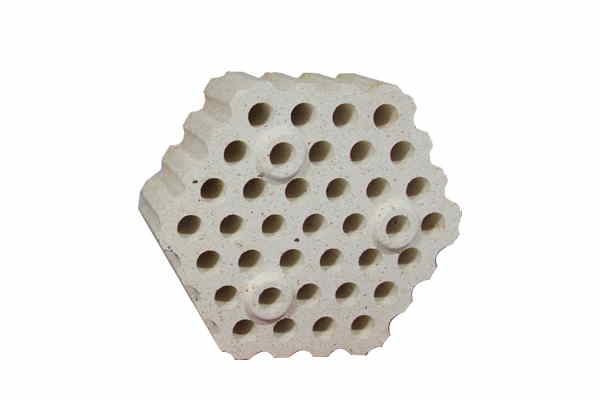
Low-creep clay bricks are now one of the commonly used refractory bricks in blast furnaces and hot blast furnaces, and as the wind temperature increases
Al2O3-SiO2 has good creep resistance, which is determined by the microstructure of the material (cioè. the relative content of crystalline and glass phases in the material, the distribution state between crystalline phases, and between crystalline and glass phases).
Low-creep clay bricks are now one of the commonly used refractory bricks in blast furnaces and hot blast furnaces, and as the wind temperature increases, the creep resistance of clay bricks increases. Low creep clay bricks are made of coke clinker with dense structure, high initial, and few impurities as the main raw material, adding part of synthetic mullite and trilithon raw materials to configure into clay, which will be formed under high pressure, essiccato, and fired at high temperature.
Product characteristics
(1) High-temperature volume stability.
(2) High refractory temperature.
(3) High-temperature creep rate is small.
(4) High strength and wear resistance.
(5) Chemical erosion resistance.
(6) Buona resistenza agli shock termici.
Uso del prodotto
Low-creep clay brick is suitable for blast furnaces, hot air lining, ladle lining and steel casting, iron furnaces, forni di riscaldo, fornaci di vetro, boilers and coke ovens, and other thermal engineering equipment.
Low creep high alumina brick is made by adding other beneficial auxiliary minerals to the production process of ordinary high alumina brick to improve the creep resistance. With the development of ironmaking blast furnaces with large volumes, temperatura del vento elevata, and long life, the proportion of low creep high alumina brick for hot blast furnaces is getting higher and higher.
Methods to improve the creep resistance
Different creep temperatures adding different beneficial minerals can improve the creep resistance of high alumina brick.
When the creep temperature at 1550 ℃, 1500 ℃ additive is quartz, three stone minerals. Three stone refers to blueschist, rhodochrosite, e silice.
When the creep temperature is at 1450 ℃, 1400 ℃, e 1350 ℃, the additives are trilithic minerals, corindone, and active alumina.
When the creep temperature is 1300℃, 1270℃, and 1250℃, the additions are trilithic minerals.
The above trilithic minerals, corindone, and activated alumina are added in the form of a matrix. Because the mullitization of the matrix can improve the mullite content of high alumina brick, reduce the glass phase content, and improve the high-temperature resistance, high-temperature volume stability performance, e resistenza agli shock termici.
Low creep furnace top high alumina brick is made of high alumina bauxite clinker as the main raw material, adding creep resistance of trilithic raw materials to configure into clay, attraverso lo stampaggio ad alta pressione, e cottura ad alta temperatura.
Low creep furnace top high alumina brick packaging is divided into two kinds: ordinary wooden pallet packaging, wrapped with plastic film on the outside, moisture-proof and rain-proof, can be sent all over the country. Fumigation-free pallet packaging, suitable for export to overseas markets.
Low-creep electric furnace is roof high alumina brick and is mainly used for masonry blast furnaces, altiforni caldi, tetti di forni elettrici, altiforni, reflection furnaces, and other furnace roof lining refractory bricks.
Low creep red pillar refractory brick is made of mullite and red pillar as the main raw materials, formed by high pressure and high-temperature firing. It has the characteristics of low impurity content, bassa porosità, small bulk density, resistenza alle alte temperature, stability under high-temperature conditions, buona resistenza agli shock termici, and a small creep rate. Allo stesso tempo, it is suitable for the configuration of large and medium-sized blast furnaces and hot air furnaces.
Refractory brick is an important part of industrial furnaces, used in various industries such as steel, cemento, bicchiere, and petrochemical industry. The use of fire bricks can improve the efficiency of industrial processes and reduce energy costs. PER Refractories specializes in manufacturing and supplying these high-temperature-resistant bricks.
Da ottobre, i prezzi dell'allumina hanno continuato a salire, and China's largest bauxite importer - a…
Primo, Alto mattone di allumina: The Leader In High Temperature Refractories As a leader in high-temperature…
The application of refractory bricks in the kiln immediately endangers the operation rate of the…
Analysis Of The Causes Of Common Quality Problems In Tunnel Kiln Construction And Measures To…
Corundum quality refractory castables are made from corundum to the new jade refractory insulation material…
Analisi delle materie prime refrattarie in alluminio-silicio Prof. Li Yong of the University of Science and…